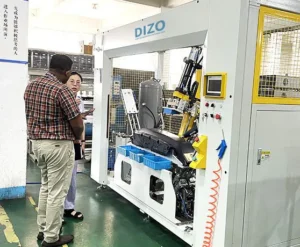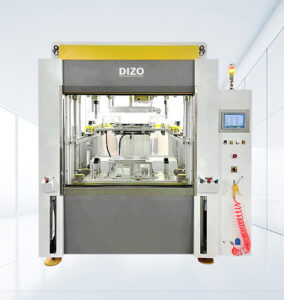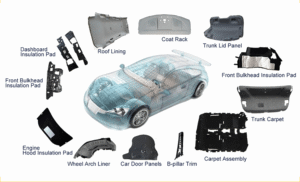🏭 How Plastic Pallet Welding Equipment Reduces Injection Machine Tonnage and Initial Investment
For plastic pallet manufacturers, high injection molding machine tonnage often means high costs — both in terms of equipment investment and production energy consumption.
However, with the advancement of plastic pallet welding technology, manufacturers can now produce large pallets using smaller injection machines, significantly lowering startup and operational costs.
Dizo Ultrasonic Technology (Dizo Sonics) offers advanced hot plate pallet welding equipment that enables efficient production with reduced machine tonnage.


The Traditional Challenge — Large Tonnage, High Investment
Plastic pallets are large, heavy-duty structures that traditionally require:
Injection machines of 2000–4000 tons or more
Large molds with high clamping force
Substantial power consumption and floor space
This leads to:
High equipment purchase costs
Increased energy bills
Limited production flexibility
Difficulty in scaling production for different pallet designs
For small and mid-size pallet manufacturers, these factors make entry into the pallet industry costly and risky.
The Smart Alternative — Plastic Pallet Welding Equipment
Instead of molding a full pallet in one shot, plastic pallet welding technology allows manufacturers to mold the pallet halves separately (top and bottom) using smaller injection molding machines, and then join them with a hot plate welding machine.
✅ This approach reduces the required injection machine tonnage by up to 60%
✅ Significantly cuts down on capital investment
✅ Maintains the same strength and durability as one-piece pallets
Example: With Dizo’s pallet welding solution, a pallet originally requiring a 3000-ton injection machine can now be produced using two 1500-ton machines plus a Dizo hot plate welding system.
Key Advantages for Pallet Manufacturers
1️⃣ Lower Initial Investment
Smaller injection machines = lower purchase cost
Reduced mold manufacturing cost
Shorter lead time for new pallet projects
💡 According to Dizo’s customer data, total investment can be reduced by 30–50% when adopting a two-part molding + welding process.
2️⃣ Greater Production Flexibility
Produce different pallet designs using the same base equipment
Easier to modify molds for design upgrades
Ideal for custom pallet production and export orders
Learn more about pallet customization: Dizo Case Studies
3️⃣ Lower Energy and Maintenance Costs
Hot plate welding requires less energy than full-size injection molding, while maintaining structural integrity.
Additionally, Dizo’s machines are designed with:
Servo-driven systems for precision and low energy use
Modular tooling for fast changeovers
Digital temperature control for consistent welding quality
4️⃣ Proven Strength and Reliability
Welded pallets undergo 3-meter drop tests and load-bearing tests, proving their performance equals or exceeds that of one-shot molded pallets.
Watch our performance video:
🎥 Plastic Pallet Drop Test After Welding
Real-World Example
A leading logistics equipment supplier in Southeast Asia replaced its traditional 3300-ton injection line with:
Two 1600-ton molding machines
One Dizo hot plate pallet welding system
Results after 6 months:
Equipment investment reduced by 45%
Energy consumption down 35%
Production efficiency increased 25%
ROI achieved within 12 months
Visit: About Dizo Ultrasonic
External Industry Insights
For additional reading on cost-saving strategies in pallet manufacturing:
Future of Pallet Manufacturing — Smarter, Leaner, and Greener
With global logistics moving toward reusability and sustainability, the ability to produce strong, recyclable plastic pallets at lower cost is becoming essential.
By integrating Dizo’s pallet welding technology, manufacturers can:
Reduce capital barriers
Optimize floor space
Lower carbon footprint
Achieve consistent, automated production
✨ Ready to reduce tonnage and costs in your plastic pallet production line?
📞 Contact Dizo Ultrasonic today for a free consultation and process analysis.






